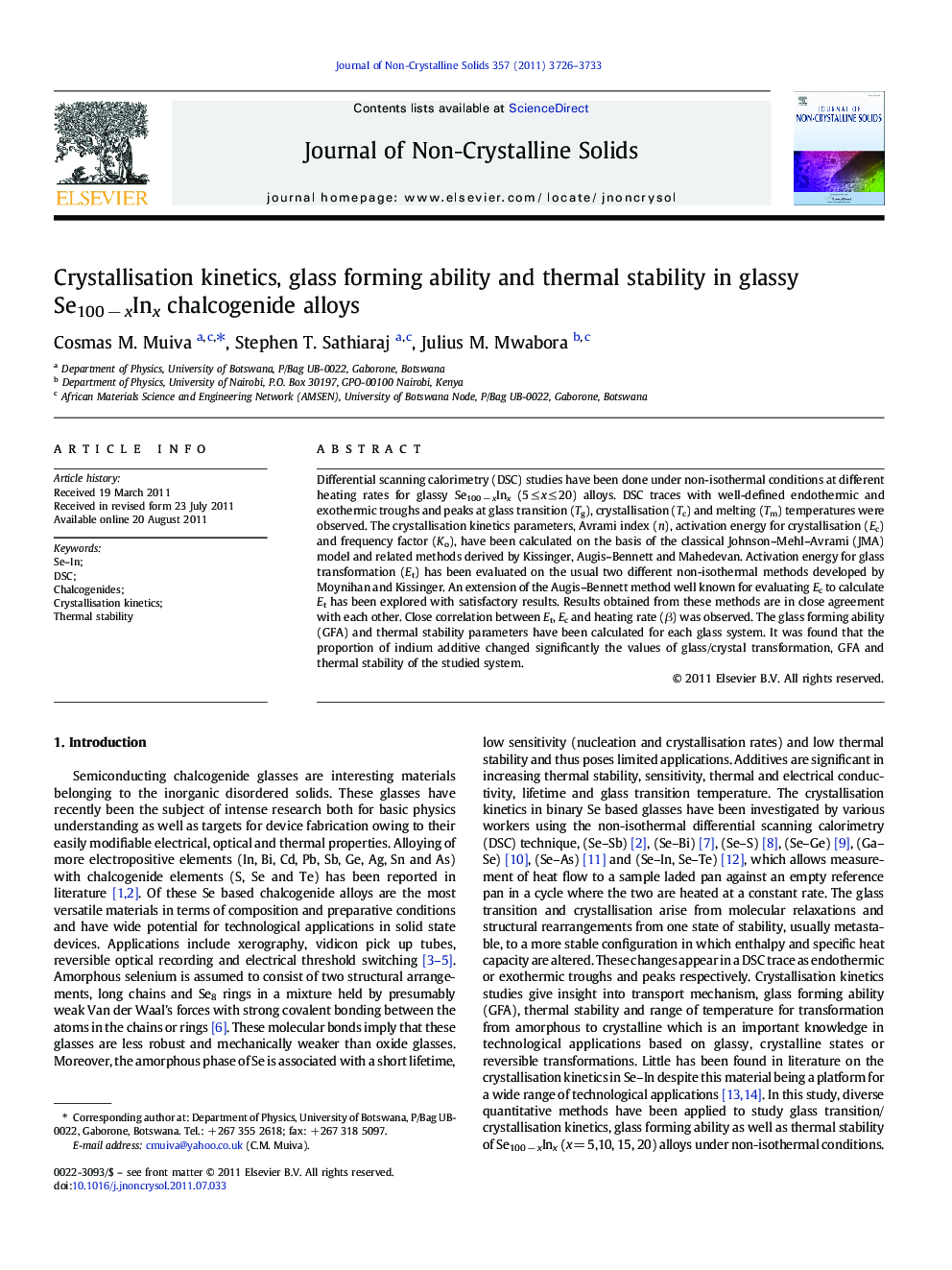| Article ID | Journal | Published Year | Pages | File Type |
|---|---|---|---|---|
| 1482580 | Journal of Non-Crystalline Solids | 2011 | 8 Pages |
Differential scanning calorimetry (DSC) studies have been done under non-isothermal conditions at different heating rates for glassy Se100 − xInx (5 ≤ x ≤ 20) alloys. DSC traces with well-defined endothermic and exothermic troughs and peaks at glass transition (Tg), crystallisation (Tc) and melting (Tm) temperatures were observed. The crystallisation kinetics parameters, Avrami index (n), activation energy for crystallisation (Ec) and frequency factor (Ko), have been calculated on the basis of the classical Johnson–Mehl–Avrami (JMA) model and related methods derived by Kissinger, Augis–Bennett and Mahedevan. Activation energy for glass transformation (Et) has been evaluated on the usual two different non-isothermal methods developed by Moynihan and Kissinger. An extension of the Augis–Bennett method well known for evaluating Ec to calculate Et has been explored with satisfactory results. Results obtained from these methods are in close agreement with each other. Close correlation between Et, Ec and heating rate (β) was observed. The glass forming ability (GFA) and thermal stability parameters have been calculated for each glass system. It was found that the proportion of indium additive changed significantly the values of glass/crystal transformation, GFA and thermal stability of the studied system.
► Differential scanning calorimetric studies on Se100 − xInx glassy alloys. ► Glass transition and crystallisation kinetics studies. ► Glass forming ability and thermal stability assessment. ► Activation energy for glass transition and crystallisation are composition sensitive. ► Increased indium reduces both glass forming ability and thermal stability.
